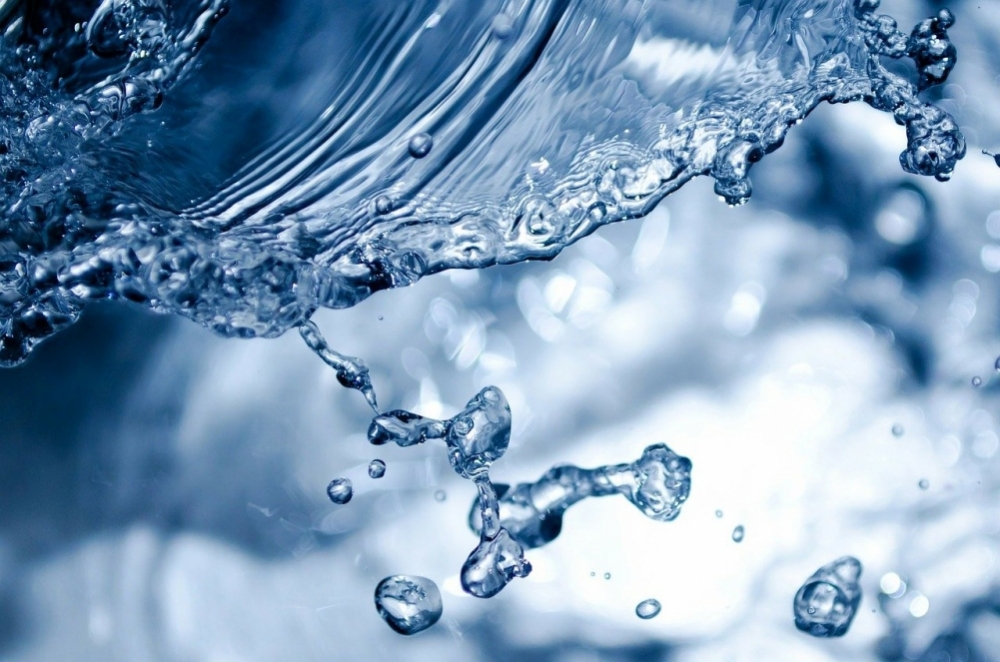


A simple and affordable solution developed by researchers at the University of São Paulo and a Nigerian collaborator eliminates even multi-resistant bacteria. Clay, papaya seeds and banana peel are among the raw materials used by the group (photo: Pixabay)
Published on 04/26/2021
By José Tadeu Arantes | Agência FAPESP – Contaminated water is one of the main global causes of disease and death, and access to clean drinking water is diminishing because of growing disposal of domestic, agricultural, industrial, and hospital waste into the environment. The main contaminants include harmful microorganisms, nitrate, phosphate, fluoride, polycyclic aromatic hydrocarbons, and heavy metals such as cadmium, mercury and lead.
According to the World Health Organization (WHO), some 2 billion people drink water contaminated by feces. Worse still is contamination of water by metal- and multidrug-resistant bacteria selected by indiscriminate disposal of antibiotics into the environment.
In this context, research conducted with the aim of promoting safe and affordable water decontamination has become an urgent necessity, especially in underdeveloped and developing countries. A study conducted at the Laboratory of Spectroscopy of Functional Materials (LEMAF) run by the University of São Paulo’s São Carlos Physics Institute (IFSC-USP) in Brazil, in partnership with the African Center of Excellence for Water and Environmental Research (ACEWATER) in Nigeria, has obtained promising results in this field.
The study had three co-principal investigators: IFSC-USP professors Andréa de Camargo and Hellmut Eckert; and Emmanuel Unuabonah, a professor at Redeemer’s University in Nigeria and head of ACEWATER. FAPESP supported the group via a Visiting Researcher Grant that made possible a three-month scientific visit to IFSC-USP by Unuabonah, and via the Center for Research, Technology and Education in Vitreous Materials (CeRTEV), one of the Research, Innovation and Dissemination Centers (RIDCs) funded by FAPESP. Grants awarded by other institutions enabled two of Unuabonah’s students to work for a period at IFSC-USP as interns.
“Photocatalysis is the most efficient way to decontaminate water,” De Camargo told Agência FAPESP. “We developed a method that uses photocatalytic nanocomposites based on low-cost precursors abundant in sub-Saharan Africa and also in Brazil, plus solar radiation. This is a sustainable solution for regions in which lack of a stable electricity supply is an additional problem. When the material interacts with sunlight, it releases reactive oxygen species such as singleton oxygen, destroying microorganisms and breaking down residues of antibiotics and agricultural effluent.”
The precursors were kaolinite clay, papaya seeds or banana peel as a source of carbon, and metal salts (copper chloride or zinc chloride). Metal-doped nanocomposites were prepared by forming a slurry with clay, carbon and metals in the proportions 1:1:2 weight per weight (wt/wt) for hybrids doped with copper or zinc individually, and 1:1:1:2 wt/wt for hybrids doped with both copper and zinc.
“Nanocomposites comprising kaolinite, crushed papaya seeds, copper and zinc were found efficient to purify water contaminated by multimetal- and multidrug-resistant Escherichia coli,” De Camargo said.
Production of the nanocomposites combined several laboratory techniques, including solubilizing, continuous stirring, oven-drying, calcining, sterilizing, washing, and oven-drying again. “The resulting material was packed in sterilized glass columns. Contaminated water entered at one end of the column, passed through the material in the presence of sunlight, and left the other end decontaminated,” she explained.
The study identified three water decontamination mechanisms, depending on the composite analyzed: electrostatic interaction, metal toxicity, and photocatalysis.
In electrostatic interaction, found for the zinc-doped composite, positive surface charges interacted strongly with carboxyl groups on the bacterial cell walls, leading to bacterial adhesion to the surfaces of the composite. Metal toxicity was detected to a greater or lesser extent for all three composites tested, while photocatalysis occurred in both copper- and copper/zinc-doped composites, which released singlet oxygen from molecular oxygen via exposure to sunlight and oxidation of lipids and proteins around cell membranes, leading to cell death.
“Although all three mechanisms were verified, it isn’t clear whether they occurred simultaneously or sequentially,” De Camargo said. “In any event, our study constitutes proof of the concept that hybrid nanocomposites based on low-cost precursors can be used efficiently to decontaminate water with multi-resistant bacteria.”
She underscored the finding that the copper and zinc present in the decontaminated water are not harmful to human health. “Considering average daily consumption by healthy adults, which is three and a half liters, the quantities of copper and zinc left in the water after treatment, corresponding to 0.8 mg and 0.51 mg per liter respectively, are less than the maximum limit recommended by the WHO,” she said.
The group also analyzed other possible compositions. “Nanocomposites of kaolinite, banana peel, sodium tungstate and titanium dioxide were effective in photodegrading the antibiotics ampicillin and sulfamethoxazole, as well as the antimalarial drug artemether,” De Camargo said. “Heterostructured composites such as ZnO/graphene or F2O3/graphene, supported in clay with layers of carbon from papaya seeds, promoted removal of estrogen steroids.”
The study has so far been reported in four articles published in scientific journals: “Visible light-mediated photodynamic water disinfection @ bimetallic-doped hybrid clay nanocomposites”; “Solar-active clay-TiO2 nanocomposites prepared via biomass assisted synthesis: Efficient removal of ampicillin, sulfamethoxazole and artemether from water”; “Tuning ZnO/GO p-n heterostructure with carbon interlayer supported on clay for visible-light catalysis: Removal of steroid estrogens from water”; and “Carbon-mediated visible-light clay-Fe2O3-graphene oxide catalytic nanocomposites for the removal of steroid estrogens from water”.
Source: https://agencia.fapesp.br/35716